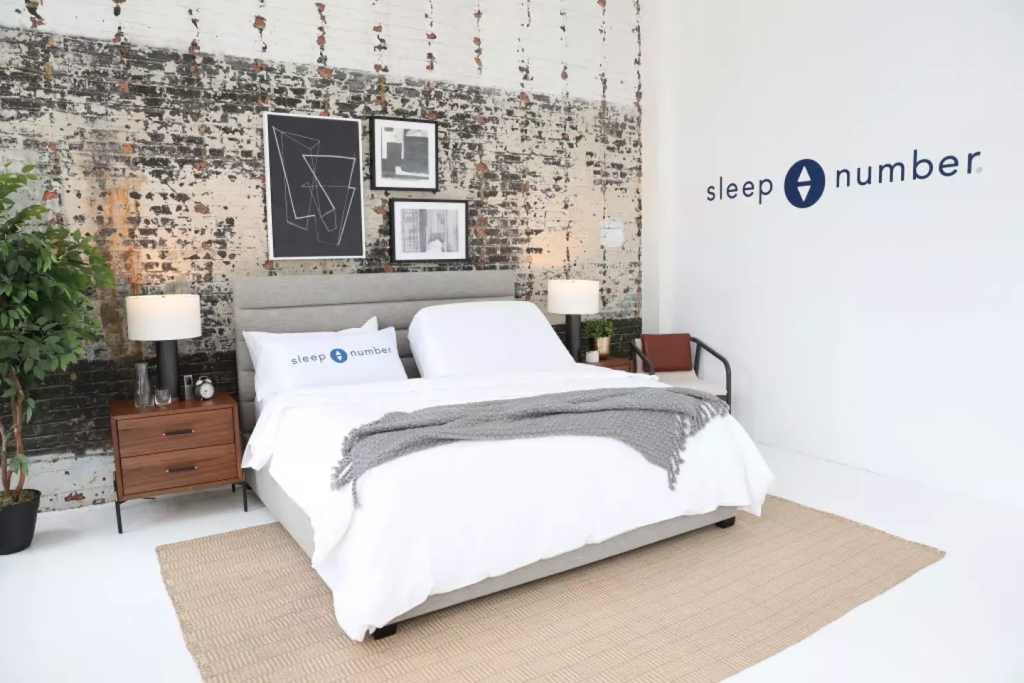The tragic death of 80-year-old Rosalind Walker from Godfrey, Illinois, has drawn attention to the potential dangers of adjustable beds. Walker’s heartbreaking demise after being trapped by her Sleep Number bed for two days raises significant questions about the safety features of such products. As her family seeks justice, the incident serves as a grim reminder of the responsibilities manufacturers have to ensure consumer safety.
A Devastating Incident: Trapped for Two Days

On March 1, 2023, Rosalind Walker became trapped between her adjustable bed and the wall after her Sleep Number bed allegedly malfunctioned, lowering itself unexpectedly. Unable to free herself, Walker remained stuck for two agonizing days before being discovered by emergency responders on March 3.
Despite immediate medical attention and hospice care, Walker succumbed to her injuries a month later on April 3. Her family recalls her final days as filled with immense suffering, adding to the weight of their grief.
Legal Action: Holding Sleep Number and Leggett & Platt Accountable
In the wake of Walker’s tragic death, her daughter, Angela Moan, has filed a lawsuit against Sleep Number and Leggett & Platt, the manufacturer of the bed’s base. The lawsuit alleges that design flaws and inadequate safety warnings contributed to the incident. Moan seeks over $25,000 in damages to cover her mother’s medical expenses, suffering, and untimely death.
Ted Gianaris, the family’s attorney, emphasized the severity of the issue, stating, “Adjustable beds are commonplace, and this tragedy shows the dangers of a poorly designed product. No one should fear for their safety using a bed.”
Key Allegations in the Lawsuit
The lawsuit outlines several critical failures in the design and safety features of the adjustable bed:
- Lack of Adequate Warnings: The bed’s instructions failed to clearly outline the risks associated with entrapment or placement against a wall.
- Absence of Alerts: No audible warning system was in place to notify users of bed adjustments that could pose danger.
- No Emergency Release Mechanism: The bed lacked an option for manual release, which could have allowed Walker to escape from the entrapment.
These alleged design flaws paint a troubling picture of how a product marketed for comfort and convenience could lead to such a fatal outcome.
Manufacturer Responses: Acknowledging the Tragedy

Both Sleep Number and Leggett & Platt have expressed condolences to Walker’s family but stand by the safety of their products.
Sleep Number emphasized its commitment to product safety while stating it only became aware of the incident after the lawsuit was filed. “We are cooperating fully with inquiries and investigations,” a representative said.
Leggett & Platt’s Executive Vice President, Jennifer Davis, echoed similar sentiments, stating that the company is committed to understanding the circumstances and ensuring accountability if needed. Despite their assurances, the case raises questions about whether existing safety standards are sufficient to prevent similar tragedies.
The Risks of Adjustable Beds
The incident involving Rosalind Walker sheds light on broader safety concerns surrounding adjustable beds, particularly for elderly or vulnerable individuals. While adjustable beds are often praised for their therapeutic benefits, the risks associated with poorly designed mechanisms cannot be overlooked.
Common hazards include trapping risks when beds are placed too close to walls, malfunctions causing unexpected adjustments, and the absence of essential safety features such as audible alerts or manual releases.
Steps to Enhance Safety in Adjustable Beds
To prevent future tragedies, manufacturers must prioritize safety by implementing key design improvements:

- Enhanced Design Standards: Adjustable beds should be constructed to minimize trapping risks, particularly for users with limited mobility.
- Clear User Warnings: Detailed instructions and warnings about potential hazards must be included to guide safe use.
- Built-In Safety Alerts: Audible or visual warnings should notify users when the bed begins to adjust unexpectedly.
- Emergency Release Mechanisms: Manual releases should be incorporated to allow users to escape in case of malfunctions.
- Rigorous Quality Control: Regular testing during manufacturing can help identify and address design flaws before products reach consumers.
The Human Cost of Safety Failures
For Rosalind Walker’s family, no amount of compensation can replace the loss of their beloved mother and grandmother. Her daughter’s lawsuit is not only a fight for justice but also a plea for accountability and change. This tragic case underscores the importance of prioritizing consumer safety, especially for products designed for the elderly or disabled.
The story has sparked public discussions about the responsibilities manufacturers have to prevent avoidable harm. Adjustable beds, marketed as tools for comfort and health, should never pose such grave risks to their users.
Conclusion: A Call for Stricter Safety Standards
Rosalind Walker’s death is a heartbreaking reminder of the consequences of inadequate safety measures in consumer products. While the lawsuit against Sleep Number and Leggett & Platt continues, the incident highlights the urgent need for stricter regulations and improved safety standards for adjustable beds.
For Walker’s family, the hope is that this tragedy will lead to meaningful change, ensuring that no other family has to endure a similar loss. By prioritizing safety and accountability, manufacturers can create products that truly enhance lives without compromising well-being.


